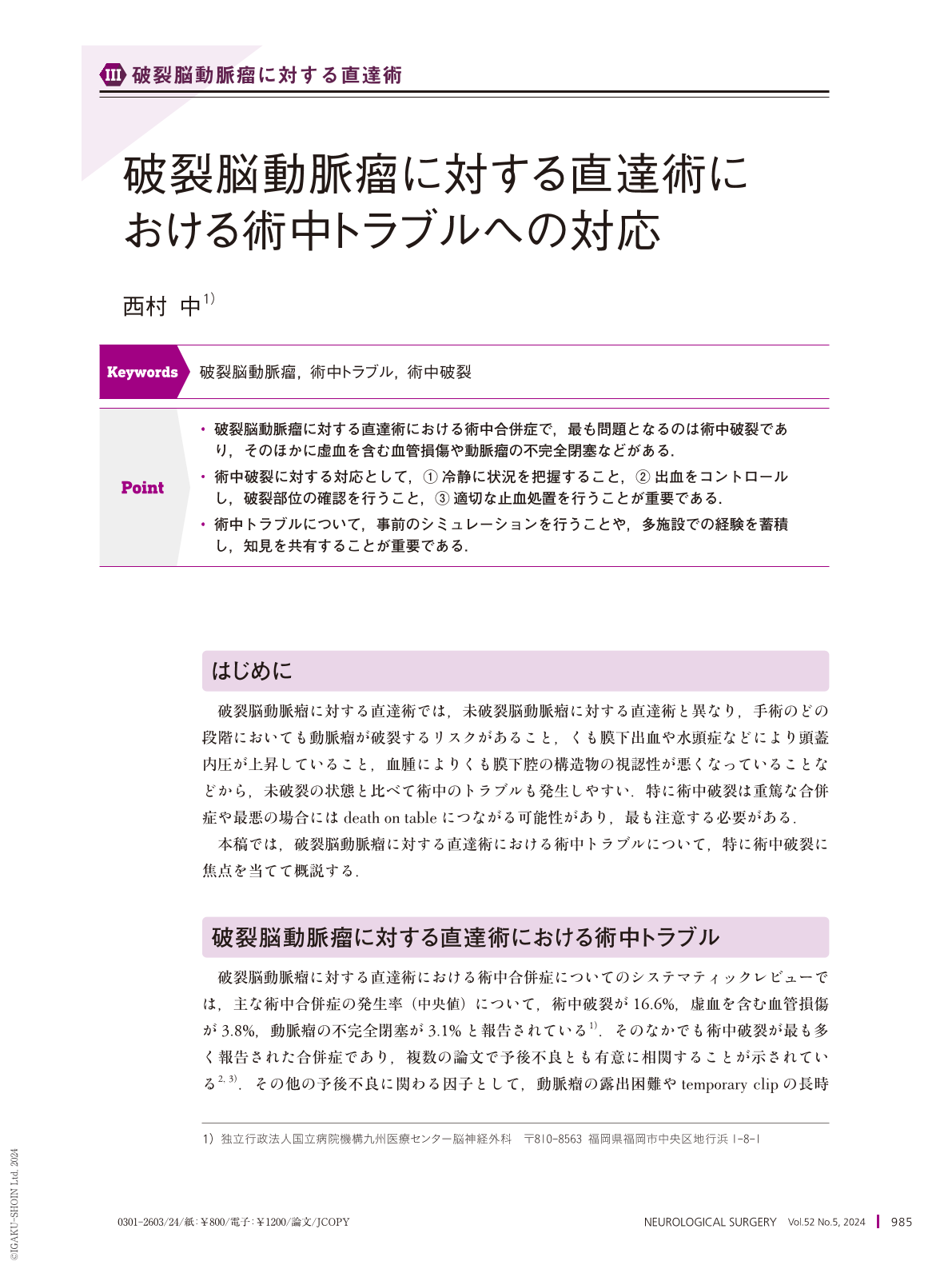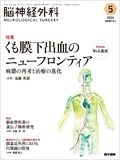Japanese
English
- 有料閲覧
- Abstract 文献概要
- 1ページ目 Look Inside
- 参考文献 Reference
Point
・破裂脳動脈瘤に対する直達術における術中合併症で,最も問題となるのは術中破裂であり,そのほかに虚血を含む血管損傷や動脈瘤の不完全閉塞などがある.
・術中破裂に対する対応として,① 冷静に状況を把握すること,② 出血をコントロールし,破裂部位の確認を行うこと,③ 適切な止血処置を行うことが重要である.
・術中トラブルについて,事前のシミュレーションを行うことや,多施設での経験を蓄積し,知見を共有することが重要である.
*本論文中、[Video]マークのある図につきましては、関連する動画を見ることができます(公開期間:2027年10月まで)。
Ruptured cerebral aneurysms have a higher incidence of direct surgery-related adverse events compared to unruptured aneurysms owing to challenging surgical conditions, such as difficulties in surgical exposure, cerebral edema, and intraoperative aneurysmal rupture, that increase the intraprocedural difficulty. The most common surgical adverse event is intraoperative rupture, with uncontrolled ruptures(during pre-dissection or from a tear in the aneurysm neck)often resulting in poor clinical outcomes. The key strategies for intraoperative rupture include staying calm, controlling bleeding, and ensuring hemostasis through appropriate methods. Given the advances in endovascular therapy for intracranial aneurysms, the number of microsurgical procedures has been decreasing. Thus, neurosurgeons at each facility need to prepare and gain experience in handling intraoperative ruptures.

Copyright © 2024, Igaku-Shoin Ltd. All rights reserved.


